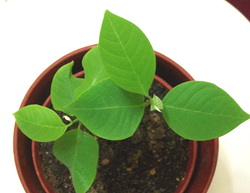I want to approach an answer to this question by considering a tree nursery:

The six chief parts of the Small Catechism gives the shape of our life of faith: the Ten Commandments, the Apostles’ Creed, the Lord’s Prayer, Baptism, Confession, and the Lord’s Supper. These six teachings, drawn from the Holy Scriptures, are the richest of nutrients that we receive as Christians. These teachings provide the structure for our lives, the DNA of our faith.
Continuing with the analogy of a tree being planted in the soil, the Ten Commandments, the Apostles’ Creed, and the Lord’s Prayer is like the humus, or organic material of the soil that provides the structure and the nutrients that the roots of the tree need (12). These three teachings provide the structure for all the teaching of Scripture. They summarize and organize Scripture for us (13).
Baptism, Confession and Absolution, and the Lord’s Supper are the nutrients from the humus or organic material of the soil that awaken, nourish, and strengthen our faith. They deliver to us the Gospel of Christ that awakens faith in Christ. Together they sustain our faith from cradle to grave (13).

What is the benefit of relearning and reflecting on the chief teachings of the Christian faith? Well, the relearning and the reflecting encourage growth in our Christian faith and in the conviction that God’s promises are true. Just as trees grow from sunlight for photosynthesis and from water that brings nutrients of the soil to the roots of the tree, so also continual learning, studying, and reflecting on God’s Word and the teachings of the Christian Faith helps the Christian grow. And as individual Christians grow, our Lord’s Church grows!
In Christ,
Pastor Josh
[1] The following analogy is taken from the book, Rooted in the Faith—Preparation for Church Membership by Dr. Charles Arand (2010), pp. 6-13. It will be adapted for use in this article. Continual references will be parenthetical.
 RSS Feed
RSS Feed